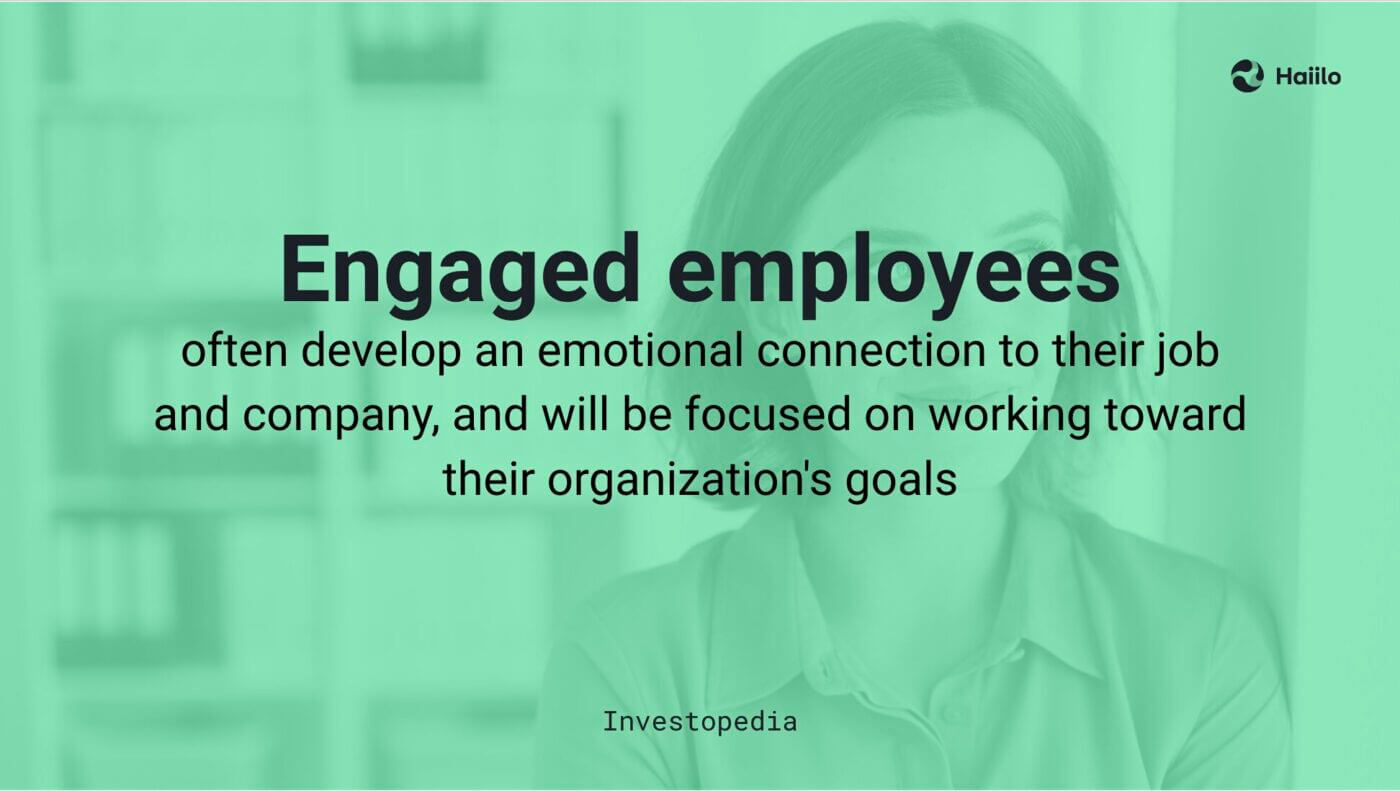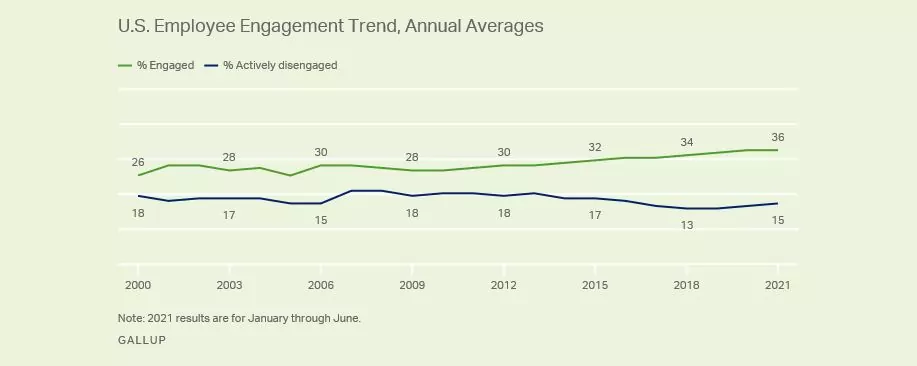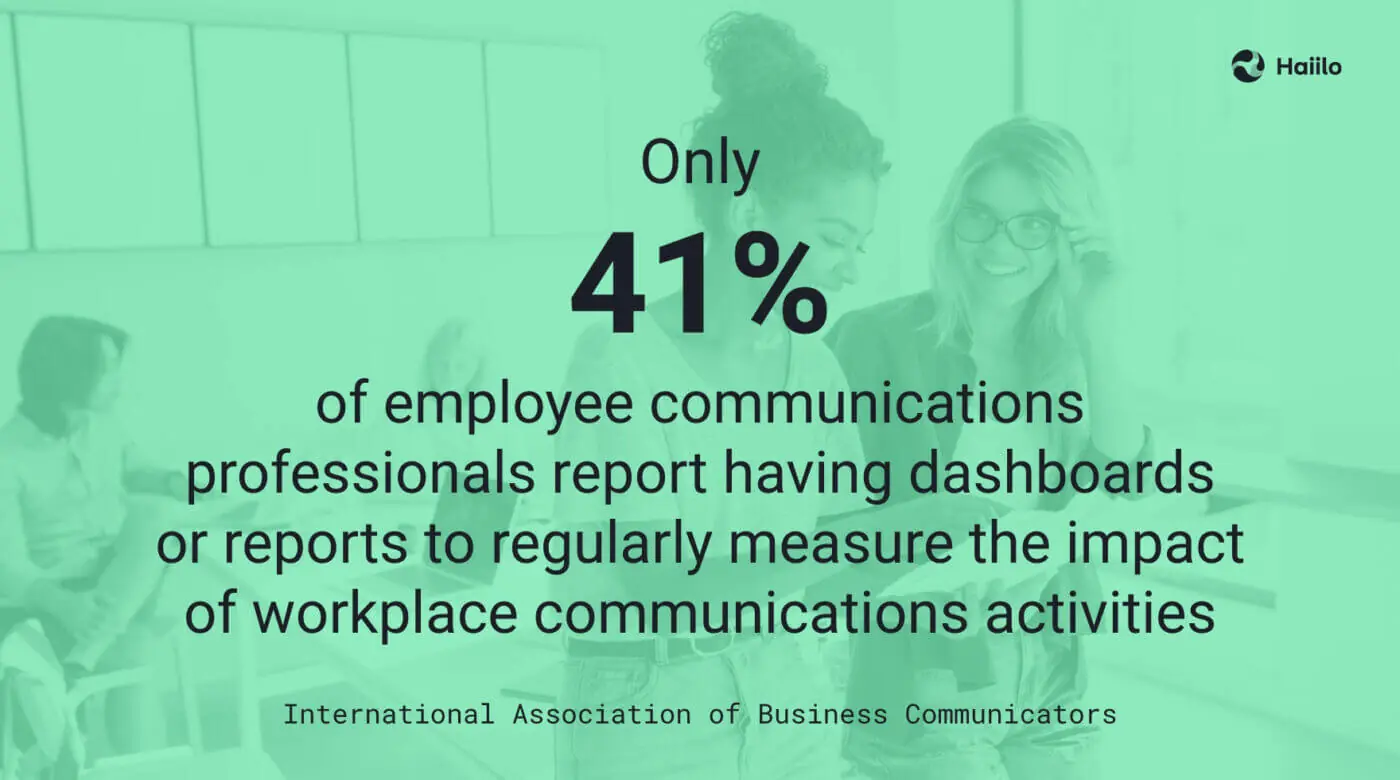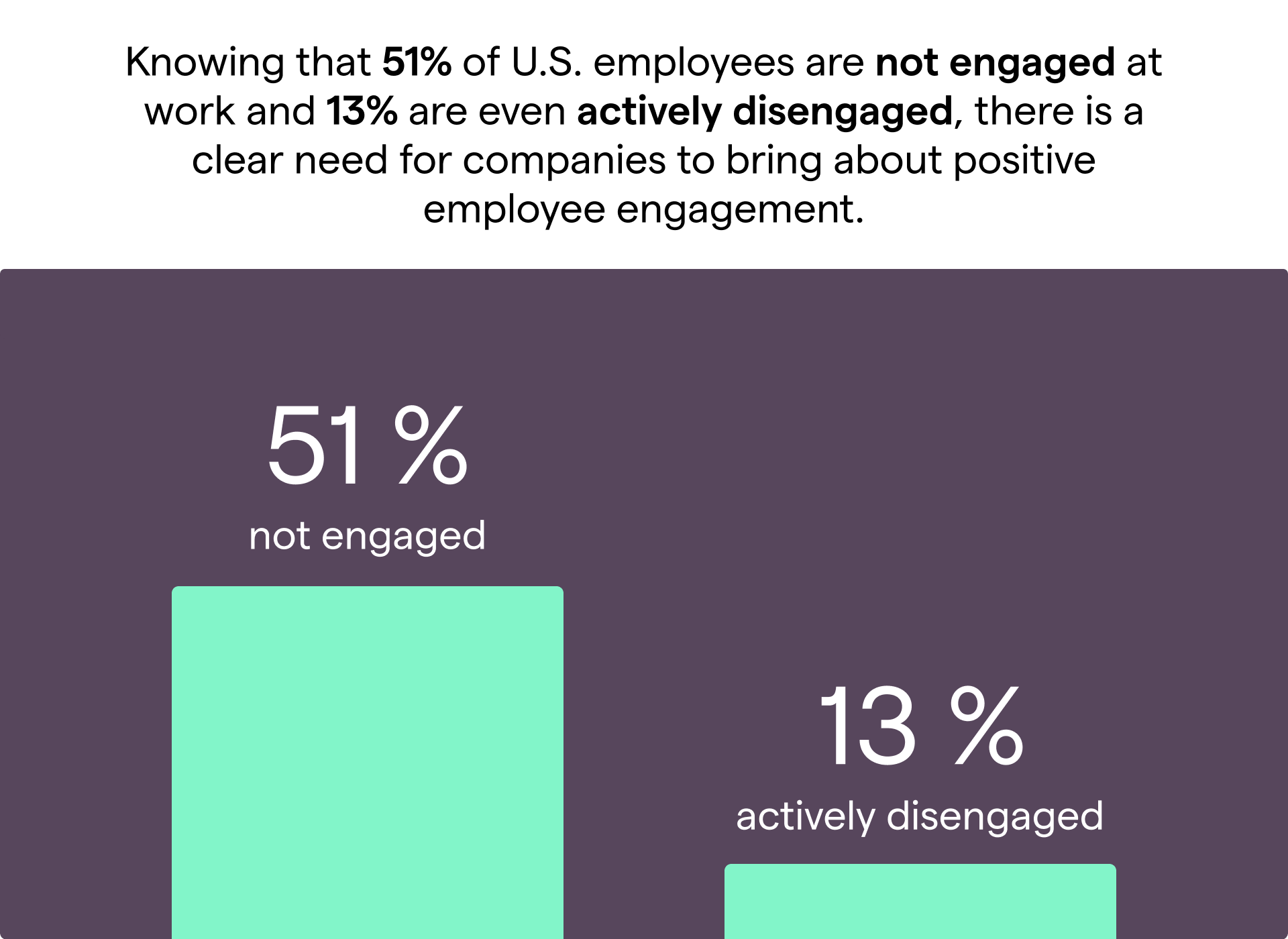What is employee engagement? How to improve it? How to measure it? How to sustain high employee engagement levels?…
These are just a few questions employers worldwide have been trying to answer for decades now. As workplace trends have been continuously changing, many employers find it difficult to adjust and keep up with the unprecedented times we have been facing in the past few years.
Even though there is no secret sauce or a quick win for improving employee engagement in the workplace, there are specific rules and best practices every employer should follow.
In this blog, we will explain how to drive motivation in the workplace, and share a few exciting employee engagement facts.
Keep your employees engaged and satisfied with the right IC tools!
Employee Engagement: Definition and New Drivers
There is no single, globally accepted definition of employee engagement. According to Wikipedia, an engaged employee is
“one who is fully absorbed by and enthusiastic about their work and so takes positive action to further the organization’s reputation and interests. An engaged employee has a positive attitude towards the organization and its values.”
And this is the definition by Investopedia:

The challenge, however, doesn’t lie in finding the correct definition. It has always been about discovering the proper drivers and implementing changes that support those drivers.
Take work flexibility, for example. A few years back, this certainly wasn’t one of the main drivers for employee engagement. Today, many employees say flexible working time and location are prerequisites for their satisfaction, directly correlated with engagement.
Then, take the work-life balance and employee wellbeing. These are probably the top 2 concerns for many employers today, and they seem to be the main drivers of The Great Resignation.
📙 Since your company culture plays a big role in driving engagement at work, we have prepared for you a guide for building a positive workplace culture!
The Current State of Employee Engagement in the Workplace
Due to the pandemic and turbulent times for many people, 2020 was the year of considerable change. Researchers have been tracking the engagement of the workforce during these unprecedented times of disruption.
It is not news anymore that hybrid and remote work have entirely changed the way we work and engage with our colleagues.
But here is the current state as explained by Gallup:
“After wild fluctuations in 2020, and hitting a peak level early this year, employee engagement has settled down in the U.S.”
Here are a few of the most interesting windings from their latest research:
- 36% of U.S. employees are engaged in their work and workplace
- Globally, 20% of employees are engaged at work
- The percentage of actively disengaged employees is up slightly in the U.S., from 14% in 2020 to 15% through June 2021
- The ratio of engaged to actively disengaged workers in the U.S. is 2.4-to-1, down slightly from 2020 when the ratio was 2.6-to-1

💡 Learn how to ensure a smooth transition to hybrid work.
Employee Engagement vs. Employee Experience
Employee engagement and employee experience often get used interchangeably even though they don’t mean the same thing.
To make it as simple as possible, we explain engagement as the consequence of employee experience. In other words, employee experience is made of all the employee touchpoints throughout their career journey, and these touchpoints have a direct impact on the level of engagement in the workplace.
Employee experience was introduced mostly to help employers define those career experiences that drive higher levels of motivation, work satisfaction, and ultimately, engagement.
📙 To ensure a positive employee experience in the workplace, check out our ultimate employee experience guide!
10 Interesting Facts About Employee Engagement
Throughout decades, there has been plenty of research about workplace engagement, so we have pulled a set of the most powerful employee engagement statistics out there:
- A recent Gallup report found that 51% of employees are disengaged in the workplace, while 13% are actively disengaged.
- 71% of executives say that employee engagement is an important contributor to organizational success.
- Gallup’s report on employee engagement shows that companies with a highly engaged workforce have 21% higher profitability.
- According to Trade Press Services, effective internal communications motivate 85% of employees to become more engaged in the workplace.
- A study on employee engagement found that companies in the U.S. lose between $450-$550 billion each year due to disengaged workers.
- A survey by Hays revealed that 47% of active job seekers want to leave their job because of bad company culture.
- Alignment with an organization’s values is the #1 predictor of employee engagement
- According to a Gartner poll, only 16% of companies leverage technology to track employee progress and engagement.
- Managers are responsible for 70% of the variance in employee engagement
- A Korn Ferry survey discovered that 33% of employees jump ship because they feel bored in the workplace and want to find new challenges.

How to Increase Employee Engagement
There is no secret sauce for driving employee engagement in the workplace. However, understanding the drivers of employee motivation and engagement is crucial.
A thorough examination of what your employees are looking for: their careers, managers, and workplaces, makes it much easier to satisfy them. This, its turn, increases their engagement, productivity, and retention.
Before you even start executing your employee engagement strategy, it is essential that you follow these 3 steps:
1. Identify employee personas
Employees can have many different characteristics depending on their age, gender, geolocations, cultural differences, psychological factors, personal preferences, and the nature of their jobs.
Understanding these differences in highly multigenerational and dispersed workplaces is critical for defining the drivers of higher engagement among different employee groups.
Still, many employers try to guess what their employees care about and stand for. They define a single workplace culture and hope that all employees adjust to it.
While this approach may work for some startups, it usually doesn’t work for larger organizations where employees’ values differ greatly.
For example, even within one company, a corporate employee in the United States would be driven by completely different factors than a frontline employee in Algeria.
💡 How to: Perform focus interviews with different employee groups to identify commonalities and similar characteristics among these employees.
📙 Not sure how to define your organization’s EVP? Check out our complete EVP guide!
2. Define the drivers of positive employee experience
After you have defined your employee personas, identify various EX drivers for each of them. However, you don’t need to start from scratch. There has been a lot of existing research about the biggest drivers for employee satisfaction in the workplace.
Here are some of them:
- Compensation and benefits
- Flexible work environments (hybrid and remote work)
- Career development opportunities
- Alignment with the organization’s company values, mission, and vision
- Frequent and honest internal communications
- Recognition and appreciation
- Work-life balance
- Relationship with a manager/superior
- Trustworthy leadership
- Latest technologies and digital workplace
💡 How to: Create a simple employee survey and distribute it to different employee personas to better understand what are their biggest drivers for an engagement at work.
3. Create an execution strategy
Now that you understand what each of the employee groups cares about the most, the next step is to create a strategy around improving those drivers.
For example, if your employees care about being recognized and you don’t have an employee recognition program, you can start by implementing a formal recognition program.
If they care about work-life balance and well-being, consider implementing an employee well-being program.
In case they don’t feel like they get enough feedback or don’t have a way to provide on-the-spot feedback, think about how to introduce a new employee feedback program.
Furthermore, if your employees care about diversity and inclusion, you can start thinking about how to improve diversity in the workplace.
In case they are looking for more flexibility, consider a hybrid work arrangement.
Finally, when your employees feel like there is a lack of alignment with corporate goals and strategy, it probably means that you need to invest more in internal communications.
📙 To learn more about improving employee engagement in the workplace using each driver, check out our detailed employee engagement guide.
How to Measure Employee Engagement
One of the first prerequisites for improving engagement in the workplace is measuring it. If you don’t understand the current state of engagement, it is hard to make decisions for improvement. And if you don’t measure the impact of new initiatives, you can never know what works well.

But how can we measure employee engagement?
Employee engagement is measured using different employee engagement surveys. Depending on the company, some surveys may be a better fit than others.
Also, instead of having annual or bi-annual surveys, consider introducing regular employee pulse surveys to track the progress of employee engagement in your company.
Here are just a few questions to consider:
- How do you feel about work today?
- Do you feel excited about coming to work?
- Can you tell that you are proud of working for [organization]?
- Are you satisfied with your current compensation and benefits?
- To what extent do you enjoy working with your team?
- When do you find your work for [organization] meaningful?
- Do the [organization]’s vision and values inspire you?
- Are you inspired by the [organization]’s vision and values?
- Do you feel like your supervisor is invested in your success?
Taking Employee Engagement to the Next Level With the Right Technology
Keeping up with all the best practices and new HR trends is not easy. However, human resources professionals are lucky to be able to leverage various HR tech tools available on the market today.
Solutions such as employee engagement apps and employee experience platforms are designed to follow the latest trends in the HR world. They enable organizations to become desirable employers to work for.
The importance of the HR tech stack should never be neglected. Moreover, this is one of the fastest-growing markets that exist today and that’s for a reason – the war for talent has never been more intense. Hence, every employer is trying to find the best solutions for attracting new talent and engaging and retaining existing talent.










